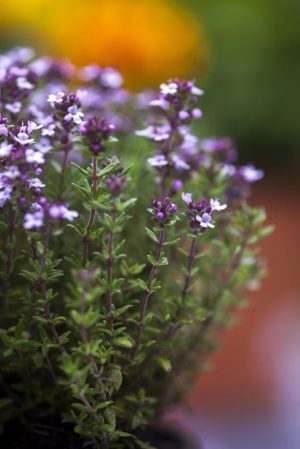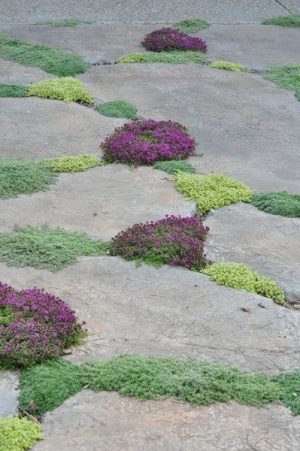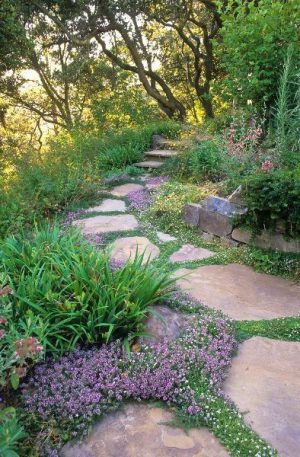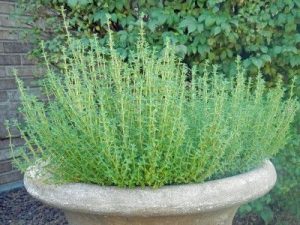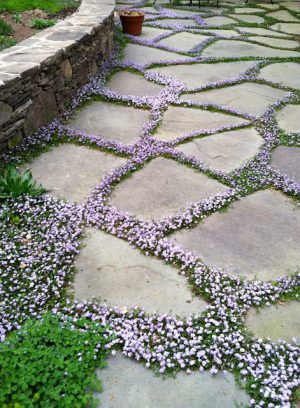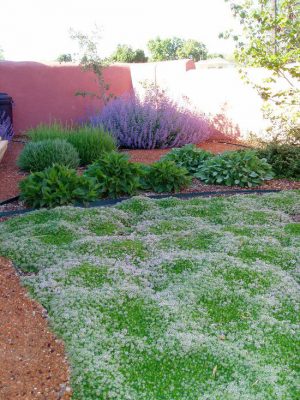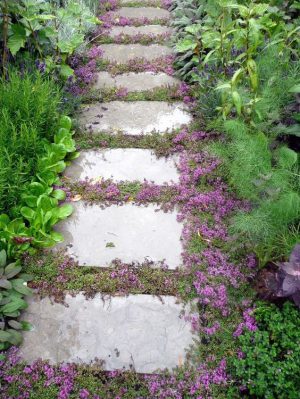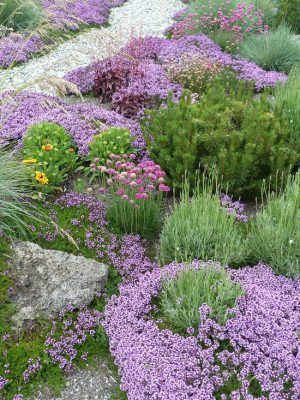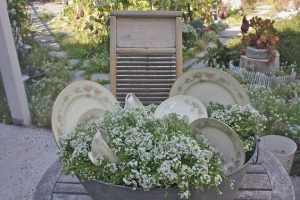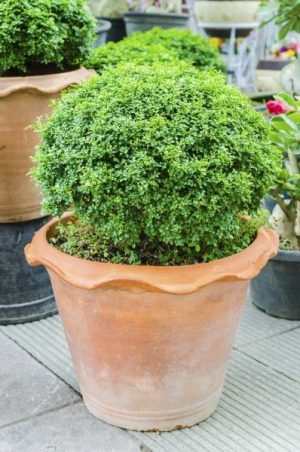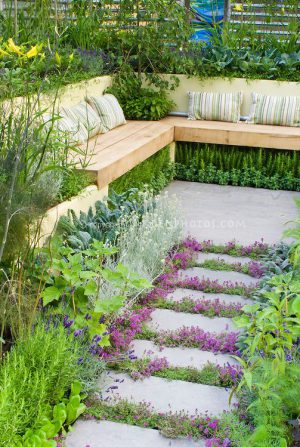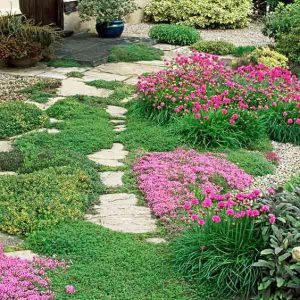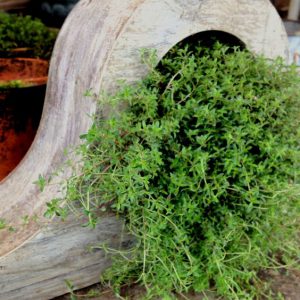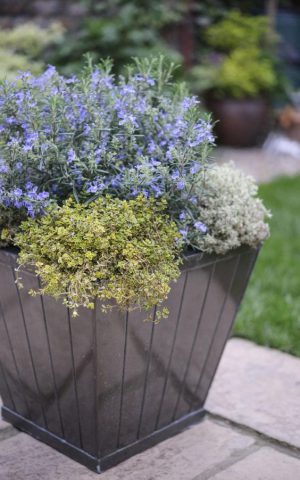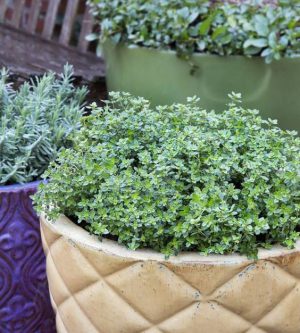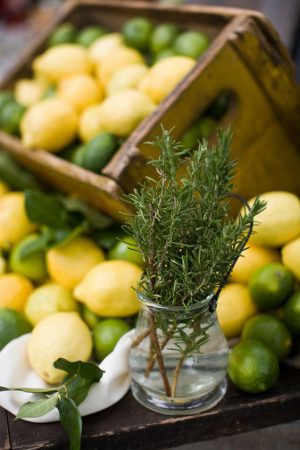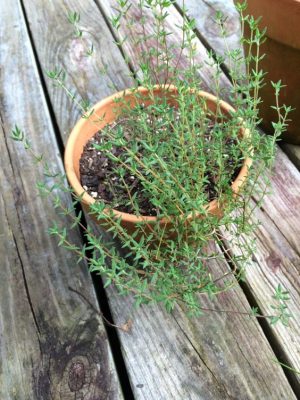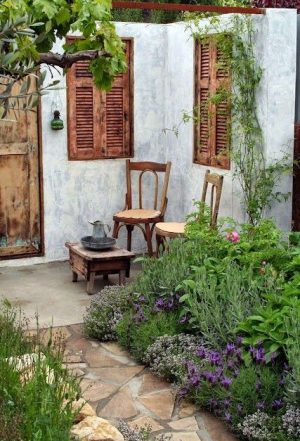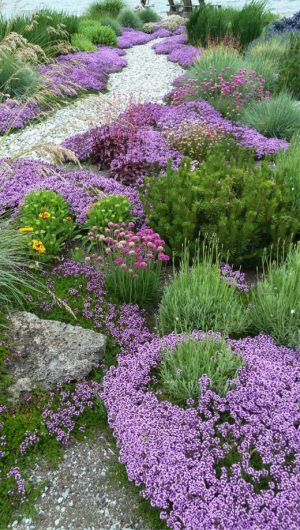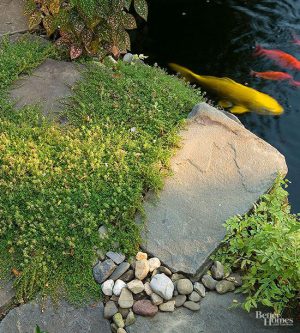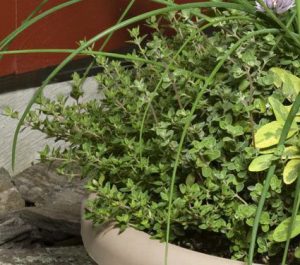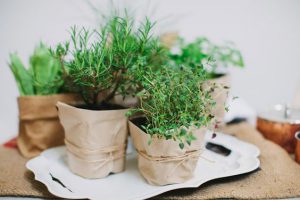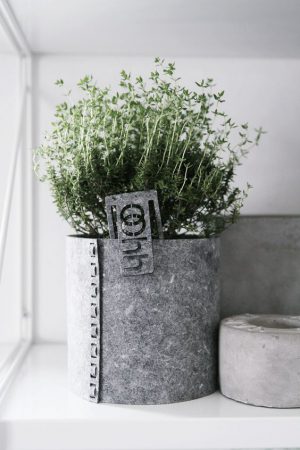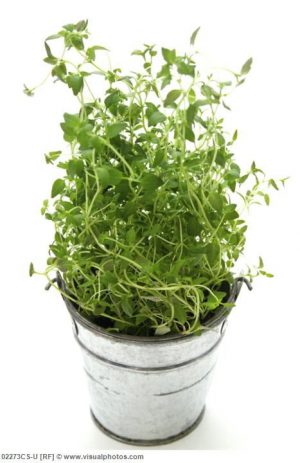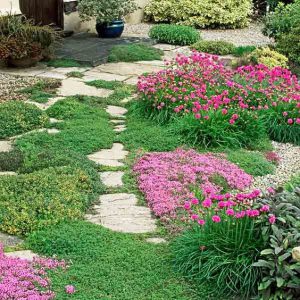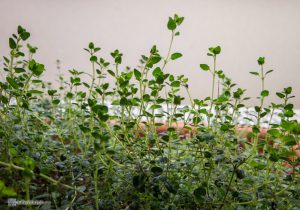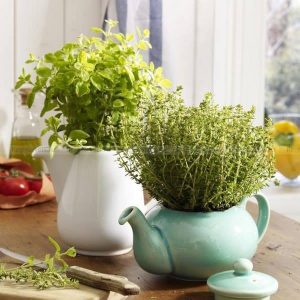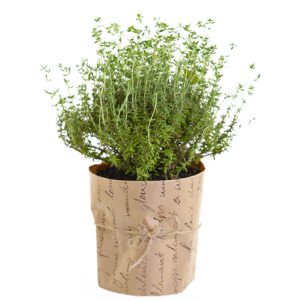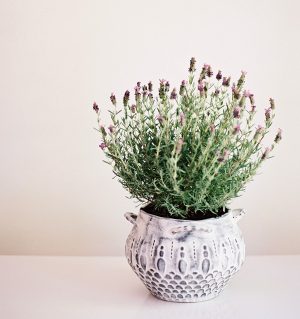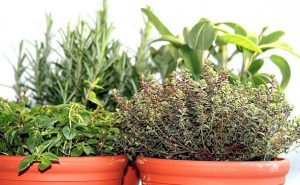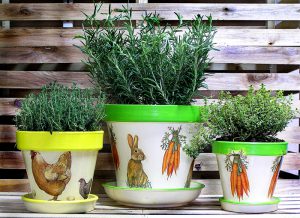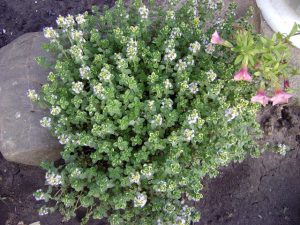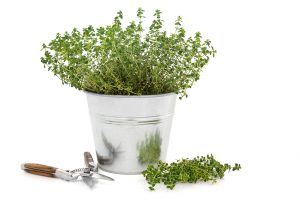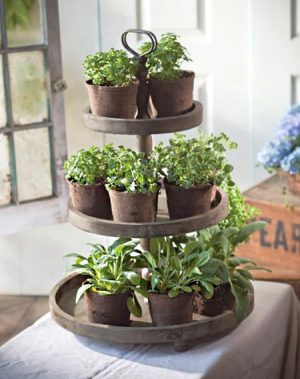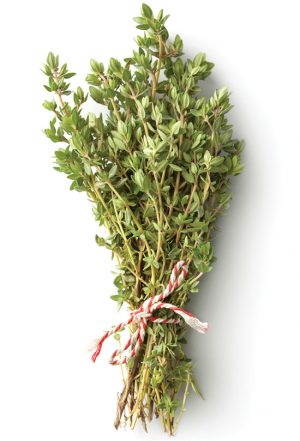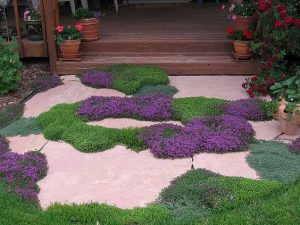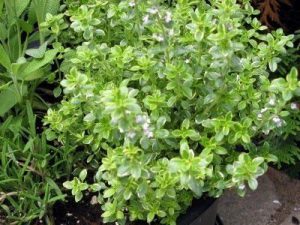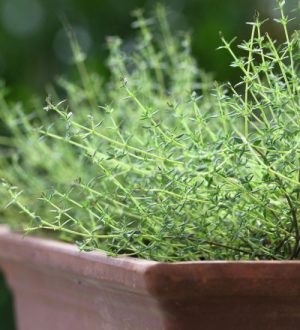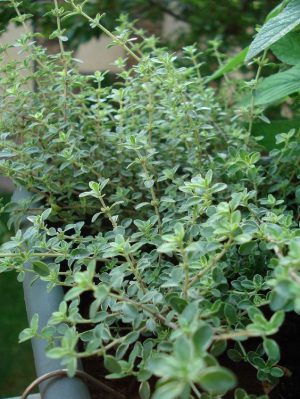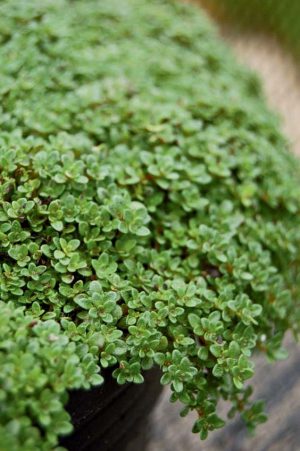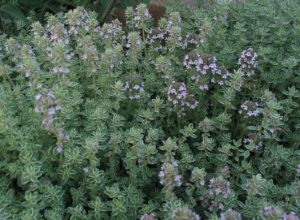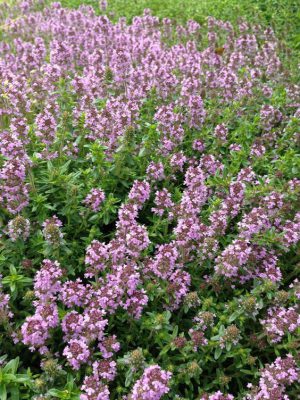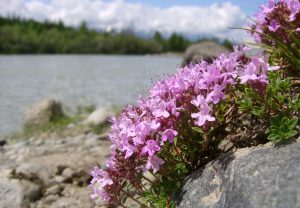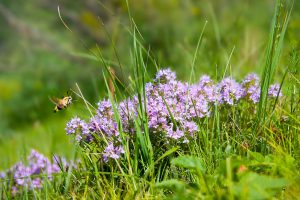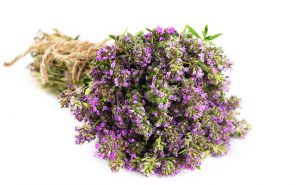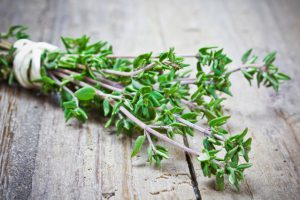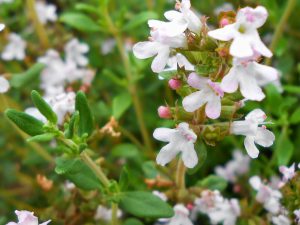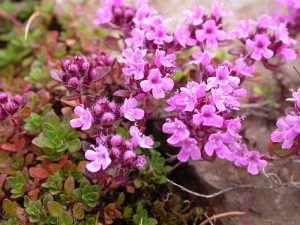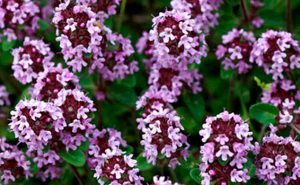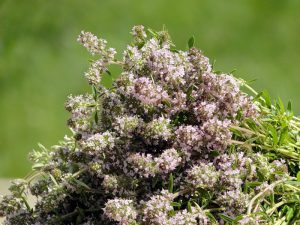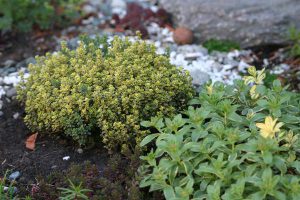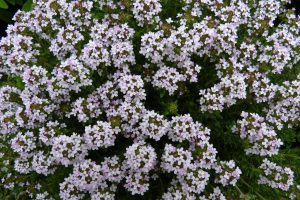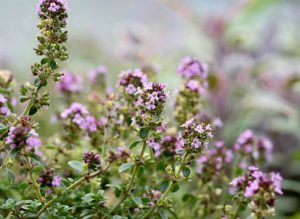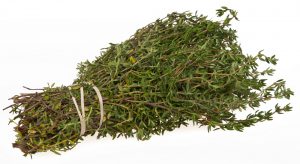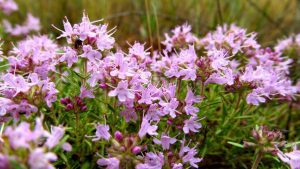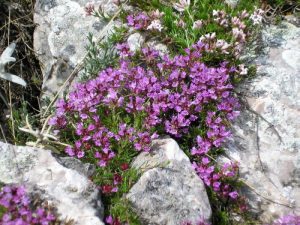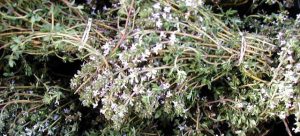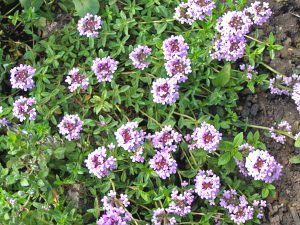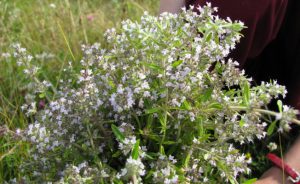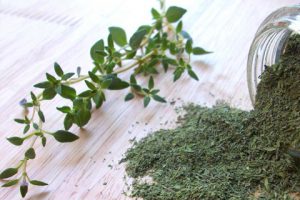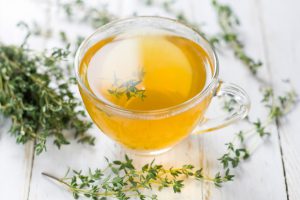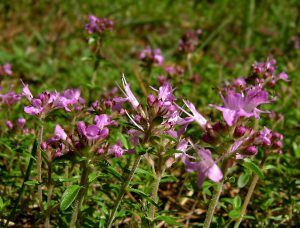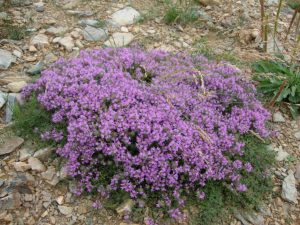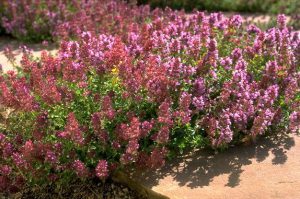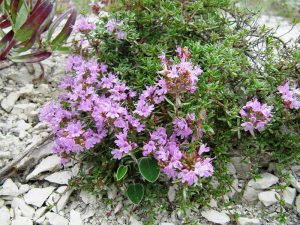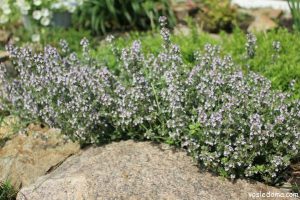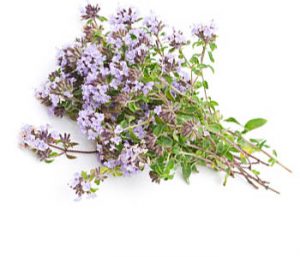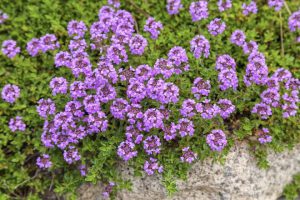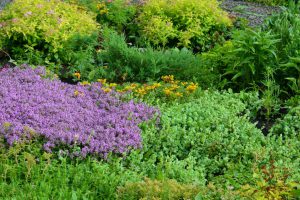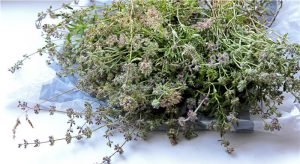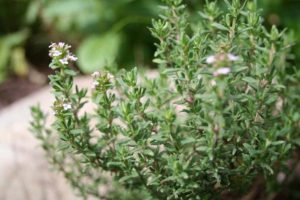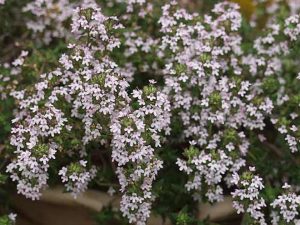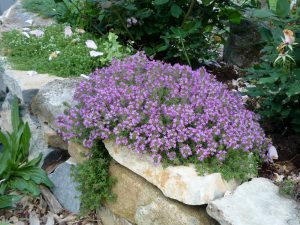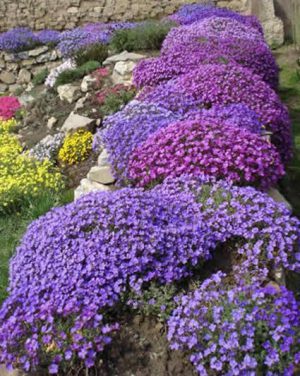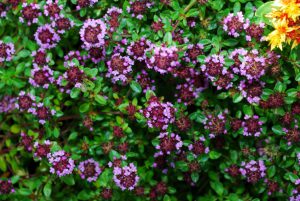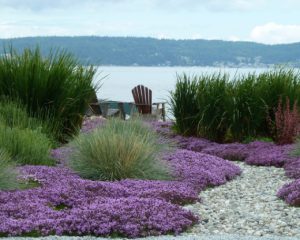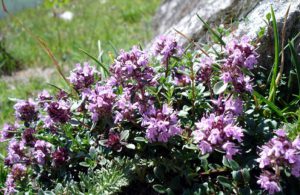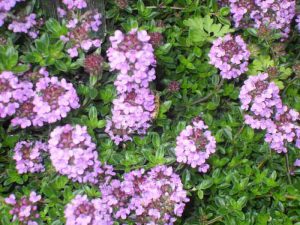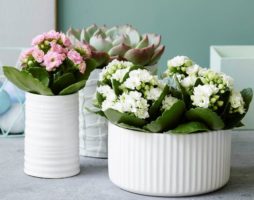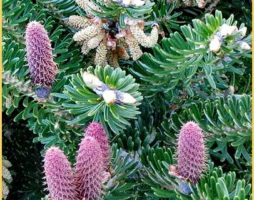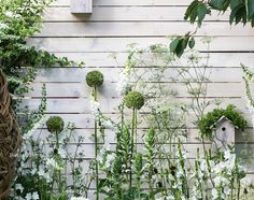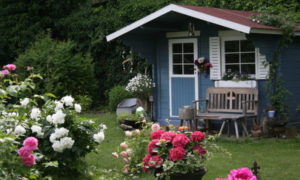This plant is well known to our hostesses. Someone knows it as thyme and actively uses it in cooking, and someone knows it as thyme - a very useful herb for medicinal purposes.
In both cases, they often deal with dried grass, and few people thought about the fact that, in addition to its usefulness, thyme is also a very beautiful bush, with flowers of an incredibly pleasant shade and aroma.

thyme bush in a pot
We also associate thyme with the celebration of the Trinity. It is customary for them to decorate their houses on this day. Wreaths from it are used to frame icons with the face of the Virgin, which gives the latter a festive look. From here came the additional popular name of the plant - the Mother of God grass.

thyme wreath for home decor
The therapeutic possibilities of thyme are truly wide. His decoctions are drunk with a strong cough, diseases of the larynx, they are treated with skin problems, lubricating and applying lotions to the affected areas. Thyme helps with neurotic conditions, and tea with thyme relieves fatigue. Thyme has found wide application in official medicine. Its essential oils are part of many medicines. Based on it, preparations for children were created. In general, a bush of thyme is a real first-aid kit on the windowsill.

Thyme - a storehouse of nutrients
If you have a dacha, then you should plant thyme on the site. With it, you can decorate the landscape in an original way. In the evenings, sitting in the gazebo, you will luxuriate in the pleasant aroma of thyme.
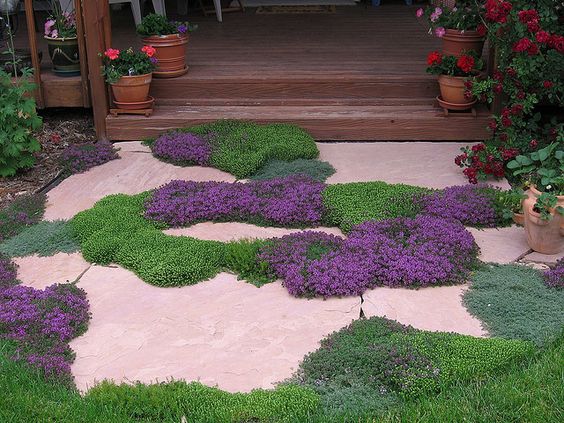
Thyme will delight not only with bright colors, but also with a wonderful aroma.
Origin
Thyme is a plant from the mint family. This is a rather complex species. It includes grass and shrubs of small stature, which have a pronounced aromatic effect. Grass stalks are woody. It can be upright or recumbent. The height of the bush does not exceed 35 centimeters. The flowers are collected in heads or resemble panicles. They are located at the ends of the peduncles.

Flowering bush of thyme
As for the color of flowers, their extreme diversity should be noted. You can see them:
1. Purple.
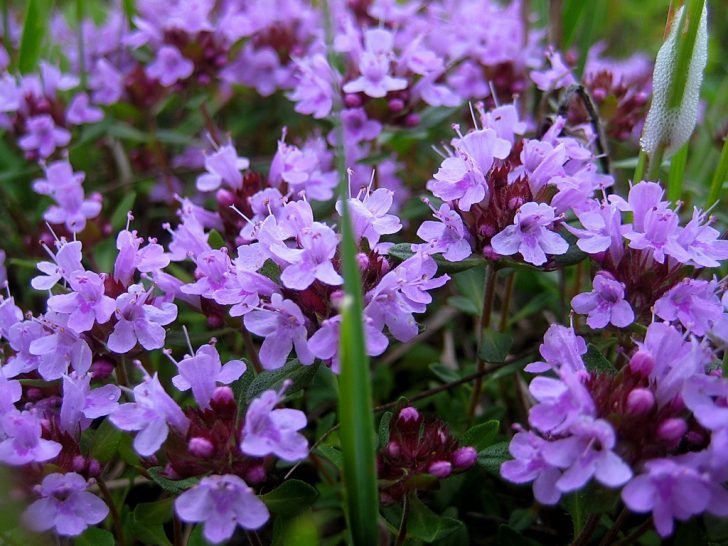
Purple thyme flowers
2. White.
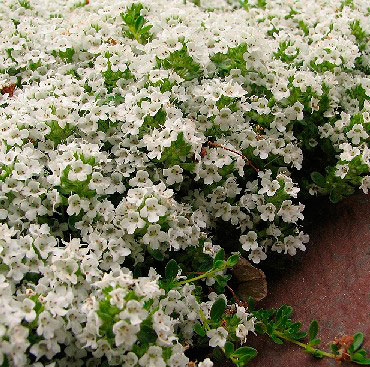
White thyme flowers
3. Pink.
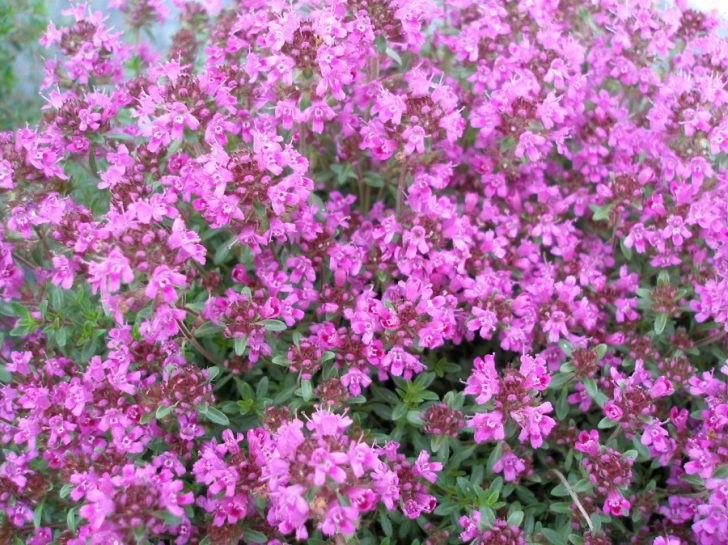
pink thyme flowers
4. Yellow.
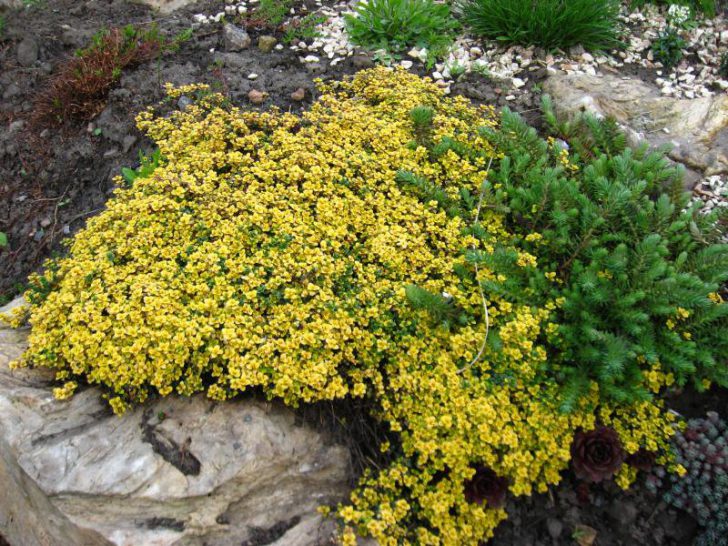
yellow thyme flowers
But not only flowers give the plant a decorative look. Leaflets are also actively involved in this matter, which for each variety have their own sizes, as well as an individual shape and a peculiar type of edging along the edges. Creeping species are great for decorating alpine slides and rockeries. On the home windowsill, small, beautifully shaped bushes will look better.
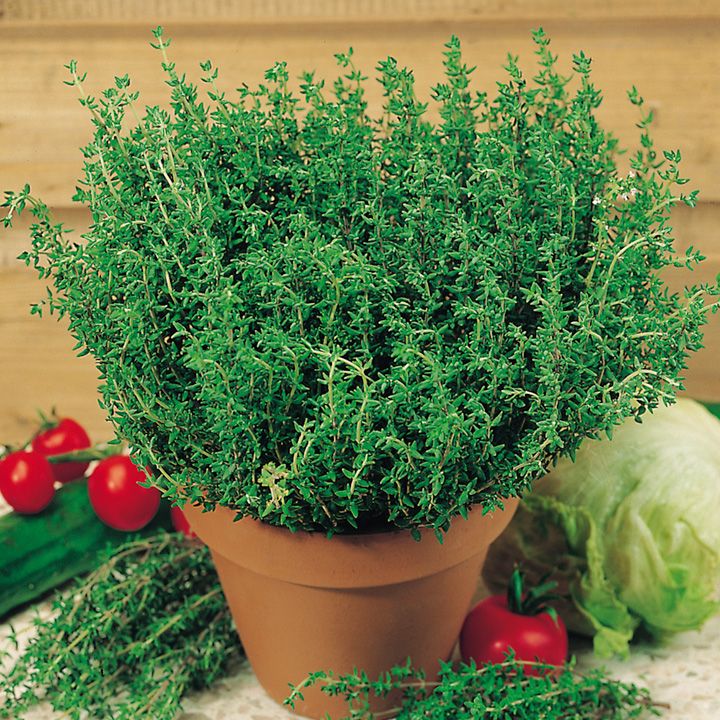
A small bush of thyme will decorate your windowsill
Varieties of varieties
“In order to grow thyme, it is enough to follow simple rules of care, and there will never be any problems with the plant”
Thyme is presented in an unusually wide varietal variety, but only a few of them, the most unpretentious in care, are recommended for home cultivation.
common thyme
The height of the bush of this variety is 15 centimeters. This type of herb is most in demand in medicine. The leaves of the plant are small, pubescent along the bottom. Thyme blooms with white or light purple flowers. This type of thyme also includes shorter subspecies.
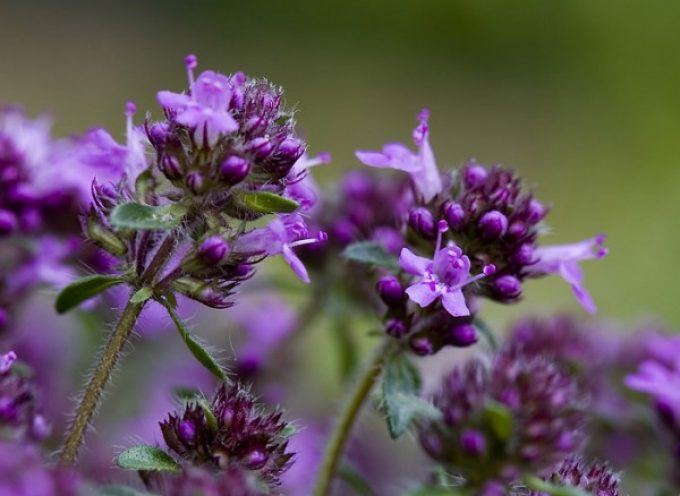
Common thyme with purple flowers
Common thyme became the progenitor of the lemon hybrid. Its leaves are distinguished by a subtle admixture of lemon flavor. In a young plant, the foliage is almost yellow. As it matures, its color will change to light green. To maintain the shape of the plant and density, the bush requires a regular haircut.
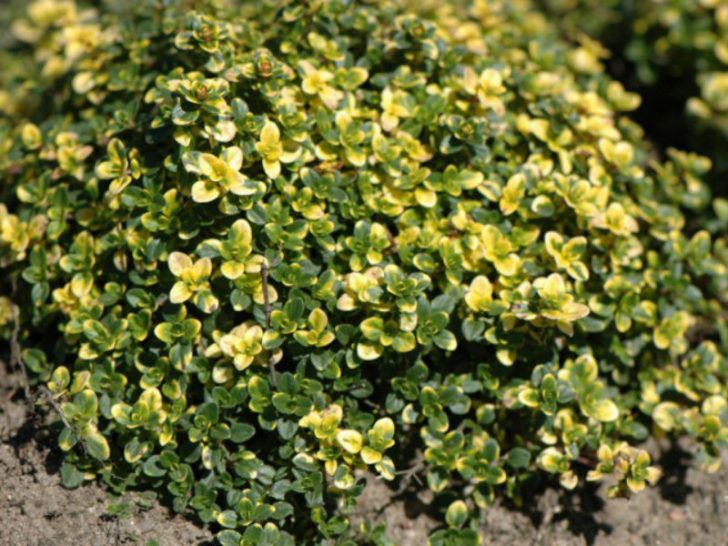
Lemon thyme with mixed leaf color
Thyme dwarf
Miniature bushes are not higher than 5 centimeters. They are characterized by dense island growth. Dwarf types produce white, scarlet and red.

Undersized thyme dwarf
creeping thyme
The bush is distinguished by creeping stems and bright pink and crimson flowers. The leaves of such a thyme are quite large, up to 1 centimeter long. The flowering period is the end of summer.
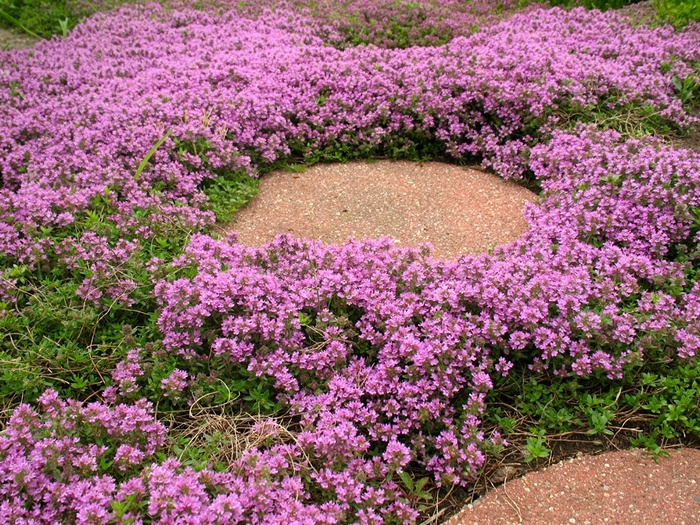
creeping thyme
rainbow thyme
The variety, in general, is more suitable for open areas, as it is incredibly beautiful, but it is no less profitable to keep it on the kitchen windowsill. Why? Because it is this subspecies that we eat and is a seasoning for many dishes. Rainbow thyme is fairly tall, blooms purple and pink, and can live up to five years if cared for properly.
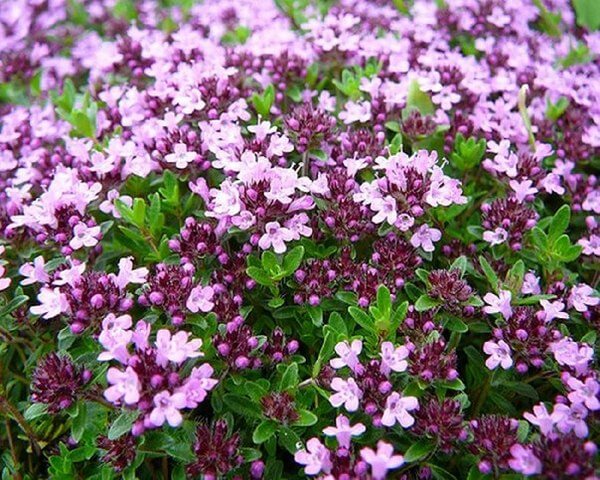
rainbow thyme
Thyme Bogorodsky
This is also a variety with thin creeping stems. It can be used in window decoration. In the country, it is often a decoration of fences, walls of houses and arbors. The flowers are purple-pink, exuding a bright aroma. This type of thyme has a bitter taste, so it is not used in teas.
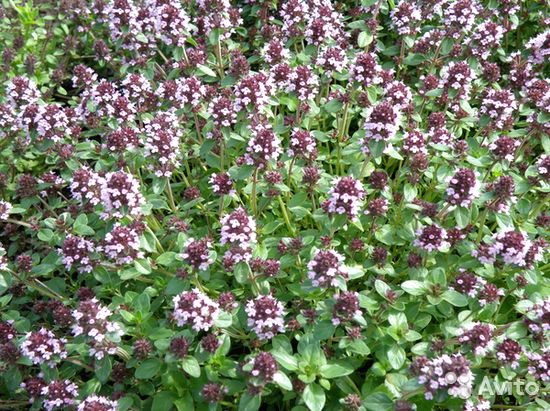
Thyme Bogorodsky
Lovers of thyme show great interest in the dwarf variety Elfin, which grows with a dense “pillow” of fifteen centimeters in diameter, and the brightly flowering varieties Alba, Cossineus, Splendens, pleasing with white, carmine-red and scarlet flowers, respectively.

Thyme variety Elfin
Thyme is completely unpretentious. In order to grow it, it is enough to follow simple rules of care, and there will never be any problems with the plant.
back to index ↑thyme from seeds
To grow a spicy plant at home, there is absolutely no need to spend money on buying seedlings, which, by the way, will still have to be carefully looked for. It is much easier to use seeds for this. Thyme planted in a pot will grow normally on a sunny balcony, as well as on a windowsill, provided that regular ventilation is provided.
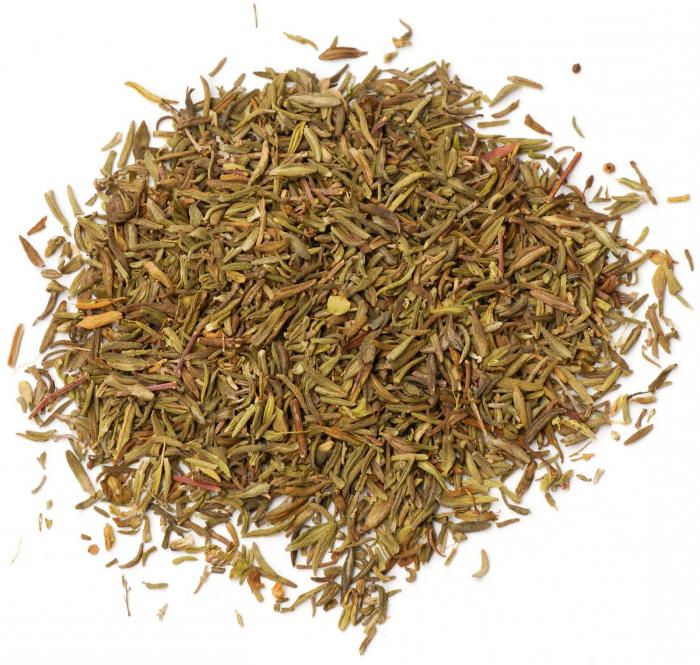
thyme seeds
The bush has a small root system, which makes it an ideal spice for home growing. Thyme on the window will also give pleasure in aesthetic terms. Its flowers will please the eye, and the refined aroma will delight the sense of smell.
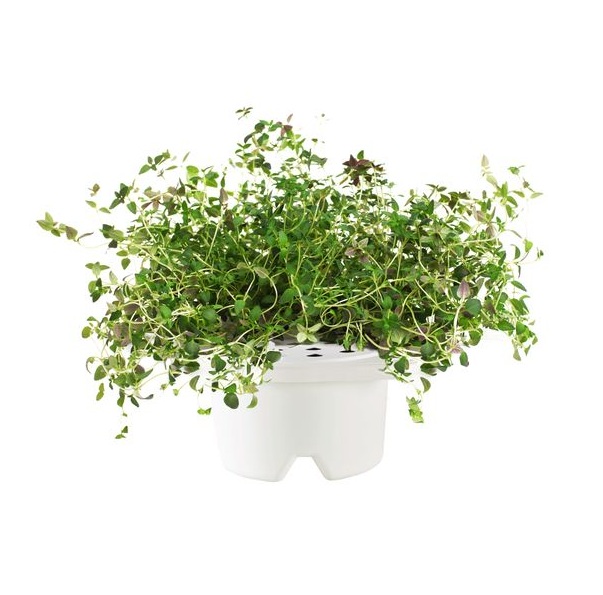
Thyme is ideal for growing on a windowsill.
Action plan:
1. We are preparing a small pot, 15 centimeters deep.
2. We cover the bottom with drainage. A two-centimeter layer is enough.
3. We prepare the soil. Mix it with vermiculite.
4. We moisten the soil from the spray gun and lay it on top of the drainage.
5. We shade the pot until the first growth appears. This will help the sprouts to get stronger and not burn out in the sun.
Germination of thyme seeds is excellent, so you can leave the strongest sprouts for breeding, and remove the rest.
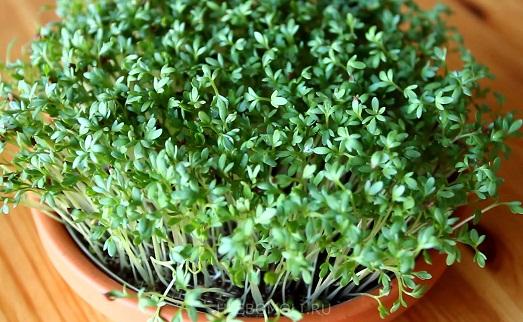
Thyme is ideal for growing at home
Thyme from cuttings
“In a situation where the decision to plant thyme on the window came spontaneously and there were no pots or soil mixture in the house at the moment X, green cuttings can be left to take root in glasses, either made of dark glass or darkened on purpose”
If you are not ready for the long process of growing thyme from seeds, you can try to breed it in an accelerated way.To have fresh herbs, you need to stock up on pots, empty your window sill, and buy fresh thyme herbs from the supermarket. Then follow the instructions
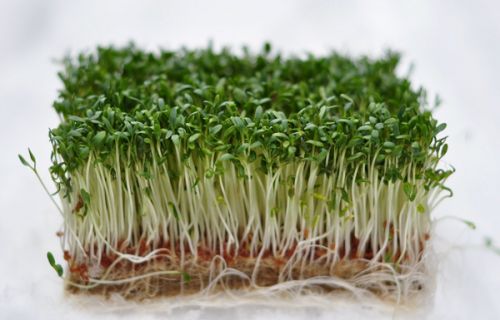
thyme shoots
Having brought a package of thyme sprigs, carefully unpack it and select the best-preserved sprigs from the total mass. Make an oblique cut on the stems. This will require a sharpened knife. Tear off the leaves located below and lower the prepared stalk into the water, leaving it there for the next five or even six hours. It is very good if you use melted water warmed to room temperature. The addition of honey (half a teaspoon will be enough for half a liter of water) or a preparation such as Epin-Extra (calculation 2 drops per glass) can contribute to better rooting.
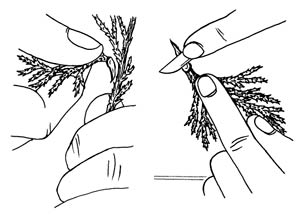
Preparing the thyme stem
During the settling of the cuttings in the water, prepare the pots. They need to be scalded with boiling water and the bottom covered with expanded clay. A layer of fertile soil is poured onto the drainage. It should take up about a third of the volume. The rest of the place will be occupied by calcined sand from the coarse-grained series. All this is watered with a pink solution of potassium permanganate.
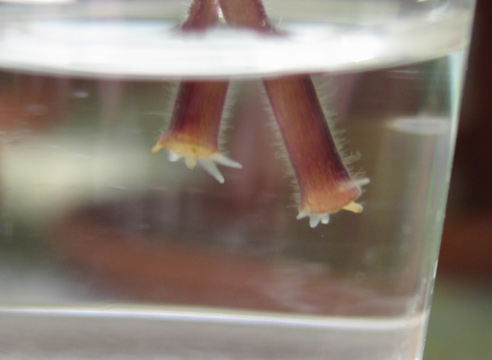
Rooting cuttings of thyme
4 cuttings are planted in one pot. After planting, they are sprayed with water and greenhouse conditions are arranged for them. The pot is covered with a half-liter jar, which you will need to remember to lift regularly, giving air access to the shoots. The roots of the cuttings are formed around the second or third week. Banks are also withdrawn during this period. After a half-moon from this moment, the seedlings can be planted in separate containers with standard fertile soil.
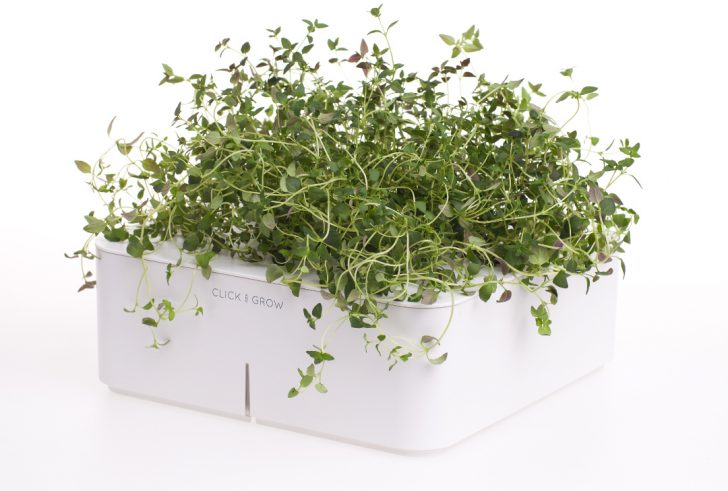
After rooting, thyme can be planted
In a situation where the decision to plant thyme on the window came spontaneously and there were no pots or soil mixture in the house at the moment X, green cuttings can be left to take root in glasses, either made of dark glass or darkened on purpose. Water at room temperature is saturated with an activated charcoal tablet and a few hydrogel granules. Provided that the microclimate of the window sill is dry and warm, the glass is placed in a plastic bag and, having filled the latter with air, is tied. Roots with such germination will appear up to 20 days. Transplant the seedlings into pots filled with light fertile soil, being careful not to chip the swollen hydrogel granules from the roots.
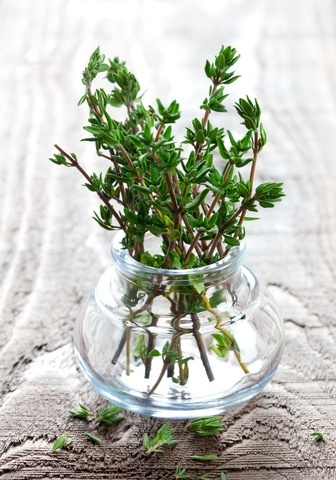
The roots of thyme cuttings appear within 20 days
Watering
Water thyme moderately, only when the soil is well dried. Only young sprouts are not planted on dry rations.
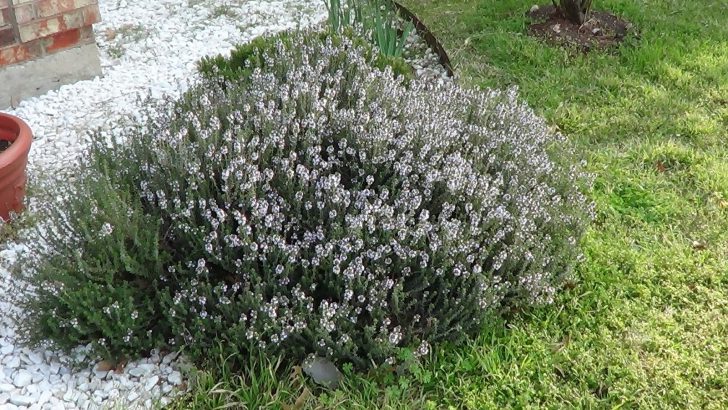
Thyme prefers moderate watering
Thyme bushes are planted in the second year, when new shoots begin to move away from the root.. The plant, like all spice herbs, responds gratefully to mineral supplements.
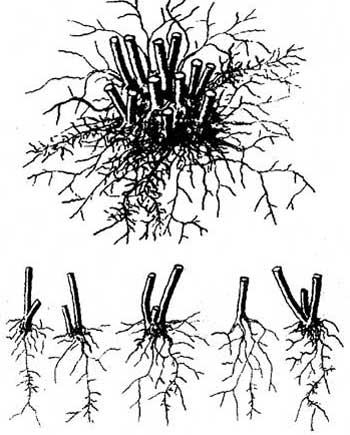
The division of the thyme bush
thyme in winter
During this period, it is advisable to remove thyme from the windowsill and send it, for example, to a glazed balcony, providing the plant with a rest period. The balcony can become his shelter only if it does not have too low temperatures in the cold. Scores below +5Oare a cause for concern and the transfer of thyme to another, warmer place
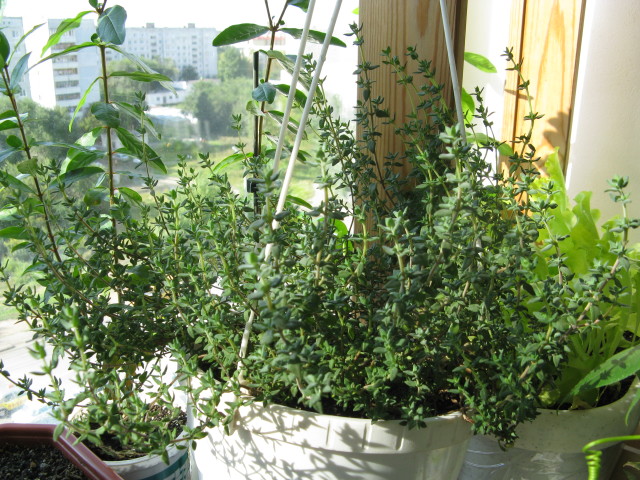
In winter, the thyme bush can be moved to the balcony
They also practice continuous forcing of thyme, but in this case it needs to be provided not just with a warm window sill, but also with additional lighting.
back to index ↑thyme collection
If you want to dry herbs for future use, to include it in spice mixes or leave it just in case for decoctions, collect it for Trinity. On this day, it is considered the most nourished with useful substances.
You can only take flowering plants. Leafy stems are cut with a sharp knife. Breaking branches, you cause irreparable damage to the entire bush.
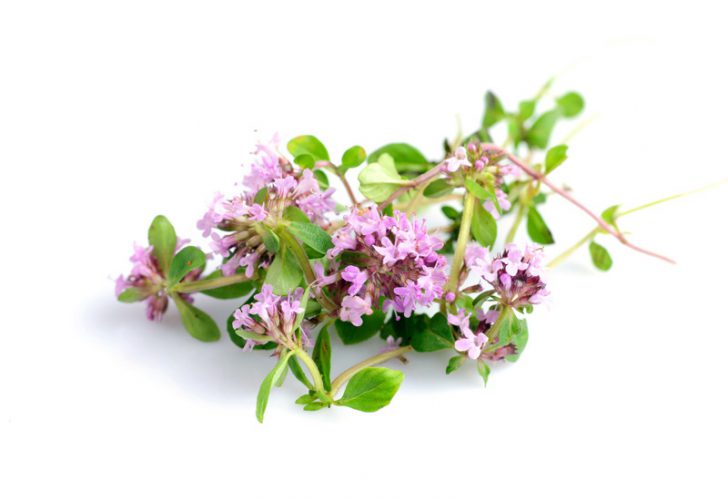
Thyme is harvested during flowering
You need to dry thyme according to the general rules, spreading it on burlap or gauze and leaving it in the shade.You can dry the grass in bunches by hanging bouquets in the attic.
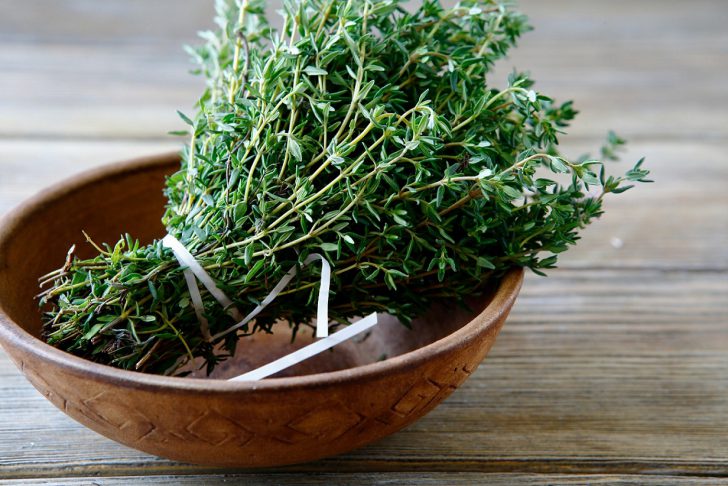
Dry thyme in bunches in the shade
Contraindications to the use of thyme
Since thyme has certain healing properties and a high content of thymol, they are not recommended to get involved in pregnant women. Seasoning can provoke an increase in uterine tone, which complicates the course of pregnancy.
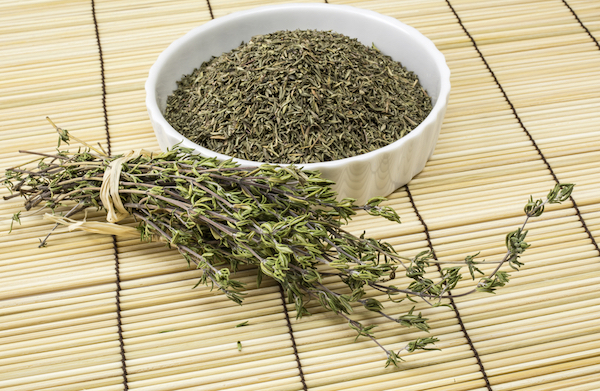
It is not recommended to consume thyme during pregnancy
Thyme is harmful for diseased kidneys, since thymol is somewhat toxic and will increase the load on the filtering organs. This is guaranteed to interrupt the course of remission and stimulate the exacerbation of the disease.
back to index ↑Conclusion
Try your hand at growing thyme and if your efforts are successful, then you will get not just an excellent addition to your collection of indoor plants, but a real natural mix of beauty and usefulness.
Photo gallery - thyme
Video
